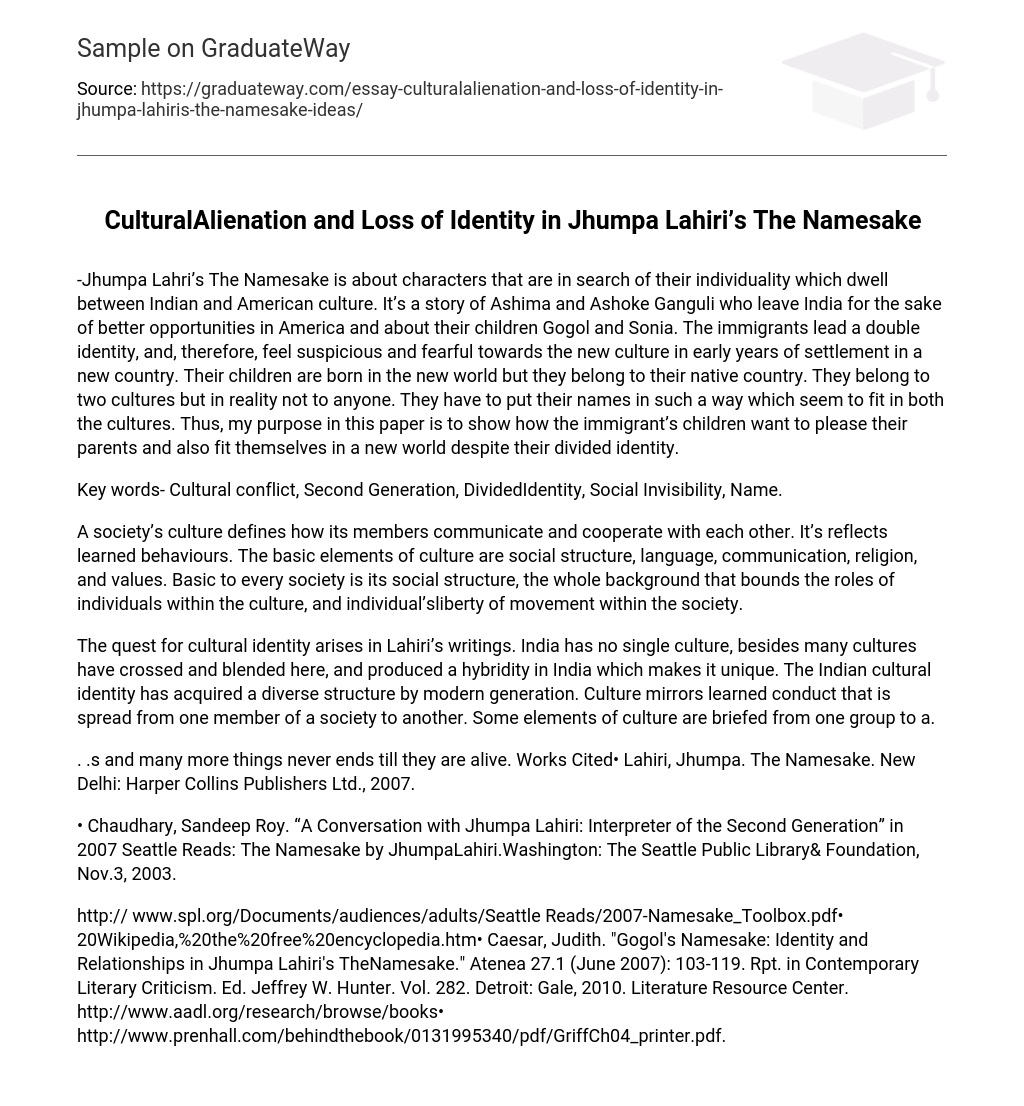Jhumpa Lahri’s The Namesake is about characters that are in search of their individuality which dwell between Indian and American culture. It’s a story of Ashima and Ashoke Ganguli who leave India for the sake of better opportunities in America and about their children Gogol and Sonia.
The immigrants lead a double identity, and, therefore, feel suspicious and fearful towards the new culture in early years of settlement in a new country. Their children are born in the new world but they belong to their native country. They belong to two cultures but in reality not to anyone. They have to put their names in such a way which seem to fit in both the cultures. Thus, my purpose in this paper is to show how the immigrant’s children want to please their parents and also fit themselves in a new world despite their divided identity.
Key words- Cultural conflict, Second Generation, DividedIdentity, Social Invisibility, Name. A society’s culture defines how its members communicate and cooperate with each other. It’s reflects learned behaviours. The basic elements of culture are social structure, language, communication, religion, and values. Basic to every society is its social structure, the whole background that bounds the roles of individuals within the culture, and individual’sliberty of movement within the society.
The quest for cultural identity arises in Lahiri’s writings. India has no single culture, besides many cultures have crossed and blended here, and produced a hybridity in India which makes it unique. The Indian cultural identity has acquired a diverse structure by modern generation. Culture mirrors learned conduct that is spread from one member of a society to another. Some elements of culture are briefed from one group to as and many more things never ends till they are alive.
Works Cited
- Lahiri, Jhumpa. The Namesake. New Delhi: Harper Collins Publishers Ltd., 2007.
- Chaudhary, Sandeep Roy. “A Conversation with Jhumpa Lahiri: Interpreter of the Second Generation” in 2007 Seattle Reads: The Namesake by JhumpaLahiri.Washington: The Seattle Public Library& Foundation, Nov.3, 2003.
- http:// www.spl.org/Documents/audiences/adults/Seattle Reads/2007-Namesake_Toolbox.pdf





